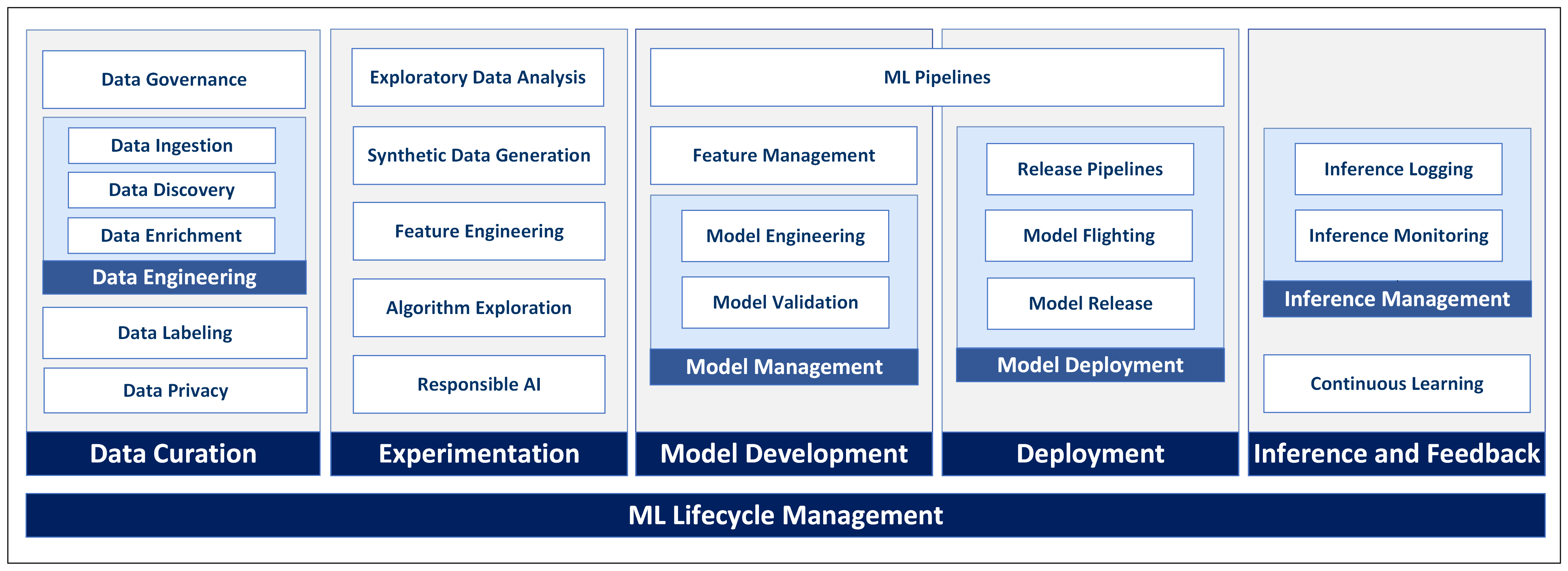Understanding production AI building blocks
Developing, deploying, and operating an AI solution in a real production environment is extremely complex. This section describes the building blocks, or capabilities, that are needed to successfully build and operate AI solutions.
The AI capabilities map shows the building blocks needed for a production AI solution. Each capability needs to be addressed at some point in the lifecycle of AI projects, but it's important to remember that they are often performed multiple times and in parallel rather than as discrete, linear phases of a project. AI/ML projects tend to be iterative, and teams need to iterate on each capability multiple times to develop, deploy, and operate high quality AI solutions.

This part of the AI playbook breaks down required AI capabilities into a manageable set of topics, including:
- Data curation: Data curation capabilities include governance, privacy, discovery, enrichment, labeling, and versioning.
- Experimentation: Experimentation capabilities include exploratory data analysis, feature engineering, and algorithm exploration.
- Model development: Model development includes model engineering, feature management, pipeline workflows, model validation, testing, and performance evaluation.
- Model deployment: Packaging and deploying models comes after model development. Capabilities include model deployment, packaging options, and deployment strategies.
- ML lifecycle management: ML lifecycle management includes production data collection, data drift, and model retraining.